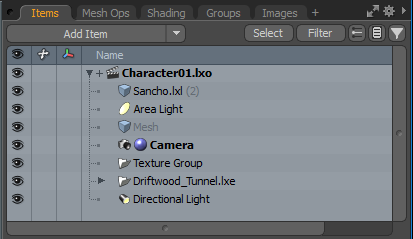Understanding Viewports
The Modo interface is made up of a collection of frames called viewports.
A viewport is an empty container whose content is determined by the options of the viewport Widget (see Using Layout Controls). Selecting the 3D Model View option changes a viewport to a 3D openGL view with its own functions and settings, but it is still just a viewport. From the Widget, you can subsequently select other options, such as Shading, and the 3D view now becomes a Shading Viewport, which is the identical size as the previous 3D view. This is because you control the sizes of viewports by clicking and dragging on their edges (the small dividers between the frames). Viewports are dynamic and react to the size of the frame they exist in.

Modo uses several different viewport types, Forms are the most common. Forms are generalized containers that can be either a button, a toolbox, or a menu. The content of these viewports can be modified through the Form Editor. The next most common are the GL Viewports, which display 3D content (named as such because they use the prominent open source graphic library named OpenGL). These viewports cannot be modified outside of the customization option available within the viewport itself (and the Preferences settings). Other viewport categories include Data Lists which contain lists of information regarding various Modo items, these include the Items List and the Shader Tree. You interact with the various items in these views, but associated attributes for specific items are viewed in another frame called a Property viewport. Property views are available for various functions including Items, Render Settings and Tool Properties.
Viewports don't have to exist within the frame of the interface itself either, Modo provides both Window and Palette viewports that float above the standard interface. These windows work in the same fashion as normal embedded frames, but their visibility can be toggled on and off with the ` (backtick). The only difference between a Window and Palette is that the windows retain the operating systems controls to individually move and minimize the viewports.
Viewports can be visualized like children's blocks, they can be stacked and arranged any way you see fit, but better than blocks, they can also be scaled, divided, and removed providing the most adaptable and customizable interface of any 3D application.
